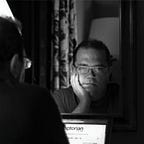The Fantastic Map of Frisland
In the wide world of maps describing fantastic or ghost islands, there are some that are true works of art and have a lot of history behind them. One such map is that of Nicolò Zeno the Younger, in which the author was supposed to collect the cartographic knowledge of his ancestors. We are dealing with a very detailed map of the coasts of the North Atlantic in a document first seen in Venice around 1558, edited by the printer and typographer Francesco Marcolini, together with an epistolary narrating a series of voyages through the northern seas to the coasts of America.
Nicolò Zeno’s goal was to prove that his family had sailed to America long before Columbus arrived in 1492. Thus, Nicolò Zeno wanted to become the descendant of the supposedly true European discoverers of the New World by creating a fictitious map and fantastic stories that had little to do with anything real.
Despite its mixture of fact and fiction, Nicolò Zeno’s map is fascinating. It shows Greenland and Iceland, the Scandinavian peninsula and a large fantastic island in the middle of the North Atlantic that he wanted to pass off as real, called Frisland. There are also other countries that pretend to be the coasts of Newfoundland. The map had several versions. In some, Frisland does not appear, and in others, the mysterious island seems to correspond to the Faroe Islands.
